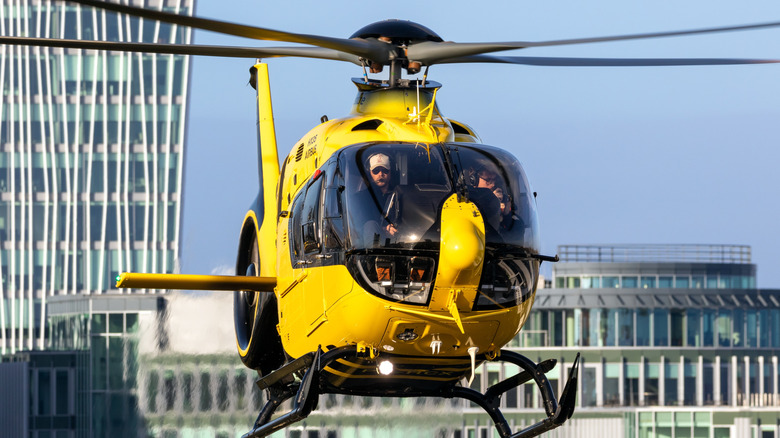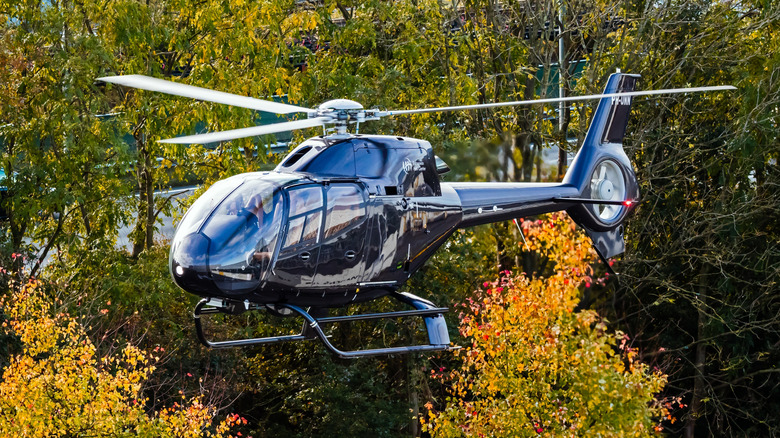How Safe Are Helicopters? Here's What The Statistics Have To Say
Helicopters are incredible machines and while they're used daily for everything from traffic reports to transporting troops, some people aren't so sure they'd ever step inside one. It's easy to get caught up in dramatic headlines or action movie scenes, but the real story is in the numbers. Whether helicopters have wheels or skids, they're statistically safe and the chances of being in a helicopter crash are lower than you might think.
Using a system that constantly updates, the Federal Aviation Administration reported that as of this writing, the fatal accident rate for all helicopters in the United States since October 2024 is 0.64 per 100,000 flight hours. While the report also revealed that the accident rate without a fatality was 2.36 per 100,000 flight hours, that number is down overall from the previous year. 2024 was a record safe year for helicopter travel, with 13 fatal accidents, down from 2016's previous low of 16.
By comparison, the National Transportation Safety Board's 2023 report shows an accident rate of 0.162 per 100,000 flight hours for commercial airlines with zero fatalities, while commuter and charter flights had an accident rate of 0.917 with a 0.198 fatality rate. General aviation, which includes private jets that crash more often than commercial aircraft, had an accident rate of a whopping 4.605 with a fatal accident rate of 0.762. Airplane travel in 2024, unlike helicopter travel, was not as safe, as there were 282 fatal accidents.
Helicopters use modern technology to ensure safe flights
Helicopters, including some of the fastest civilian helicopters, may look incredibly dangerous at first glance, but the technology has evolved over the years to include equipment that helps pilots and passengers stay safe, such as GPS systems. GPS uses onboard instruments to help the pilot fly in the right direction, despite instances when there's low visibility. Helicopter pilots can also utilize the Traffic Alert and Collision Avoidance System, or TCAS.
This system keeps an eye on the airspace around the plane, looking out for other aircraft with transponders that might pose a risk, providing a level of protection against mid-air collisions. Unlike airplanes that depend on communication with air traffic control towers, TCAS actually works on its own. Not only does this make the system more reliable, but it also gives pilots direct instructions on how to steer clear of danger.
Robinson Helicopter Company, the leading maker of civilian helicopters, ensured even safer flights moving forward, thanks to the Garmin GFC 600H Helicopter Flight Control System, or HFCS (via Globe News Wire). The system was approved by the FAA in June of 2025, and will help pilots stay within safe limits, along with full integration with Garmin displays, for smoother, more intuitive flying.

